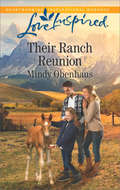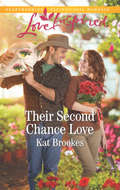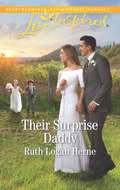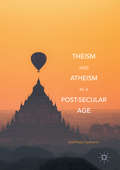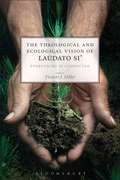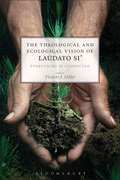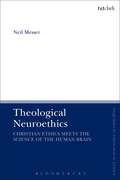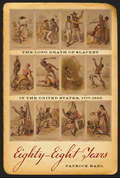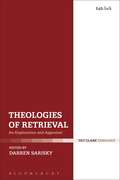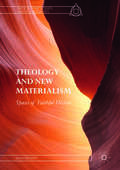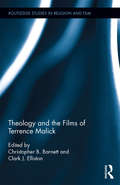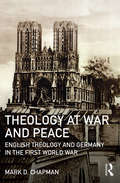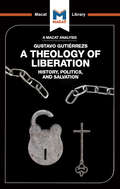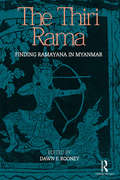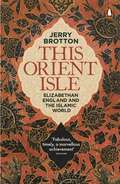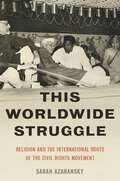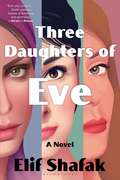- Table View
- List View
Their Second Chance Love: The Cowboy's Easter Family Wish Winning Over The Cowboy Their Second Chance Love (Texas Sweethearts #3)
by Kat BrookesA Lone Star Reunion
Their Surprise Daddy: The Bull Rider's Homecoming Their Surprise Daddy The Dad Next Door (Grace Haven #3)
by Ruth Logan HerneInstant Family
Theism and Atheism in a Post-Secular Age
by Morteza HashemiThis book examines the post-secular idea of ‘religion for non-believers’. The new form of unbelief which is dubbed as ‘tourist atheism’ is not based on absolute rejection of religion as a ‘dangerous illusion’ or ‘mere prejudice’. Tourist atheists instead consider religion as a cultural heritage and a way of seeking perfection. What are the origins of these new forms of atheism? What are the implications of the emergence of a type of atheism which is more open toward religious teachings, rituals, arts, and world views? Hashemi argues that public intellectuals must consider that it is a sign of a post-secular age in which believers and non-believers go beyond mere tolerance and engage in a creative process of co-practice and co-working.
Theism and Atheism in a Post-Secular Age
by Morteza HashemiThis book examines the post-secular idea of ‘religion for non-believers’. The new form of unbelief which is dubbed as ‘tourist atheism’ is not based on absolute rejection of religion as a ‘dangerous illusion’ or ‘mere prejudice’. Tourist atheists instead consider religion as a cultural heritage and a way of seeking perfection. What are the origins of these new forms of atheism? What are the implications of the emergence of a type of atheism which is more open toward religious teachings, rituals, arts, and world views? Hashemi argues that public intellectuals must consider that it is a sign of a post-secular age in which believers and non-believers go beyond mere tolerance and engage in a creative process of co-practice and co-working.
The Theological and Ecological Vision of Laudato Si': Everything is Connected
by Vincent J. MillerThis volume provides a comprehensive introduction to the spiritual, moral and practical themes of Pope Francis' encyclical Laudato Si'. Leading theologians, ethicists, scientists and economists provide accessible overviews of the encyclical's major teachings, the science it engages and the policies required to address the climate crisis. Chapters on the encyclical's theological and moral teachings situate them within the Christian tradition and papal teaching. Science and policy chapters, engaging the encyclical and provide introductions to the Fifth Assessment Report of the Intergovernmental Panel on Climate Change. The book provides a guide for those wishing to explore the issues raised by Laudato Si' but who lack the specialist knowledge required to know where to begin.Aimed at an undergraduate audience, this book provides a reliable introduction to the major themes of Laudato Si' such as: - a theology of Creation that embraces the insights of contemporary science- a renewed understanding of the human person in relationship to the rest of creation- a spiritual vision of love and responsibility for all creation- the necessary connection between Christian solidarity with the poor and concern for the environment- an introduction to the social encyclical tradition from which Laudato Si' both draws and develops
The Theological and Ecological Vision of Laudato Si': Everything is Connected
by Vincent J. MillerThis volume provides a comprehensive introduction to the spiritual, moral and practical themes of Pope Francis' encyclical Laudato Si'. Leading theologians, ethicists, scientists and economists provide accessible overviews of the encyclical's major teachings, the science it engages and the policies required to address the climate crisis. Chapters on the encyclical's theological and moral teachings situate them within the Christian tradition and papal teaching. Science and policy chapters, engaging the encyclical and provide introductions to the Fifth Assessment Report of the Intergovernmental Panel on Climate Change. The book provides a guide for those wishing to explore the issues raised by Laudato Si' but who lack the specialist knowledge required to know where to begin.Aimed at an undergraduate audience, this book provides a reliable introduction to the major themes of Laudato Si' such as: - a theology of Creation that embraces the insights of contemporary science- a renewed understanding of the human person in relationship to the rest of creation- a spiritual vision of love and responsibility for all creation- the necessary connection between Christian solidarity with the poor and concern for the environment- an introduction to the social encyclical tradition from which Laudato Si' both draws and develops
Theological Neuroethics: Christian Ethics Meets the Science of the Human Brain (T&T Clark Enquiries in Theological Ethics)
by Neil MesserNeil Messer brings together a range of theoretical and practical questions raised by current research on the human brain: questions about both the 'ethics of neuroscience' and the 'neuroscience of ethics'. While some of these are familiar to theologians, others have been more or less ignored hitherto, and the field of neuroethics as a whole has received little theological attention. Drawing on both theological ethics and the science-and-theology field, Messer discusses cognitive-scientific and neuroscientific studies of religion, arguing that they do not give grounds to dismiss theological perspectives on the human self. He examines a representative range of topics across the whole field of neuroethics, including consciousness, the self and the value of human life; the neuroscience of morality; determinism, freewill and moral responsibility; and the ethics of cognitive enhancement.
Theological Neuroethics: Christian Ethics Meets the Science of the Human Brain (T&T Clark Enquiries in Theological Ethics)
by Dr Neil MesserNeil Messer brings together a range of theoretical and practical questions raised by current research on the human brain: questions about both the 'ethics of neuroscience' and the 'neuroscience of ethics'. While some of these are familiar to theologians, others have been more or less ignored hitherto, and the field of neuroethics as a whole has received little theological attention. Drawing on both theological ethics and the science-and-theology field, Messer discusses cognitive-scientific and neuroscientific studies of religion, arguing that they do not give grounds to dismiss theological perspectives on the human self. He examines a representative range of topics across the whole field of neuroethics, including consciousness, the self and the value of human life; the neuroscience of morality; determinism, freewill and moral responsibility; and the ethics of cognitive enhancement.
Theologies of Retrieval: An Exploration and Appraisal
by Darren SariskyOne of the most significant trends in academic theology today, which emerges within Protestant, Roman Catholic, and Orthodox points of view, is the growing interest in theologies of retrieval. This mode of thinking puts a special stress upon subjecting classic theological texts to a close reading, with a view toward using the resources that they provide to understand and address contemporary theological issues. This volume offers an understanding of what theologies of retrieval are, what their rationale is, and what their strengths and weaknesses are. The contributions provided by a distinguished team of theologians answer the important questions that existing work has raised, expand on suggestions that have not yet been fully developed, summarize ideas to highlight themes that are relevant to the topics of this volume, and air new critiques that will spur further debate.
Theologies of Retrieval: An Exploration and Appraisal
by Dr Darren SariskyOne of the most significant trends in academic theology today, which emerges within Protestant, Roman Catholic, and Orthodox points of view, is the growing interest in theologies of retrieval. This mode of thinking puts a special stress upon subjecting classic theological texts to a close reading, with a view toward using the resources that they provide to understand and address contemporary theological issues. This volume offers an understanding of what theologies of retrieval are, what their rationale is, and what their strengths and weaknesses are. The contributions provided by a distinguished team of theologians answer the important questions that existing work has raised, expand on suggestions that have not yet been fully developed, summarize ideas to highlight themes that are relevant to the topics of this volume, and air new critiques that will spur further debate.
Theology and New Materialism: Spaces of Faithful Dissent
by John ReaderThis book argues that identified weaknesses in recent theological engagement with New Materialism can be successfully addressed by incorporating insights from Relational Christian Realism. Central themes are those of the relational and the apophatic as they represent different but essential strands of a materialist theology. The relational refers to the work of Deleuze and its influence upon key New Materialist thinkers such as De Landa, Bryant, and Braidotti but supplemented from Relational Christian Realism by Latour and Badiou and with reference to the concept of the apophatic as found in Keller and Kearney. Examining the concepts of transcendence, human agency, and a New Enlightenment, the book moves into more practical areas of aesthetics and technology concluding with a response to the contemporary apocalyptic of climate change. Being “beyond in the midst” requires developing spaces of faithful dissent and holding the tension between the relational and the apophatic in theology.
Theology and New Materialism: Spaces of Faithful Dissent (PDF)
by John ReaderThis book argues that identified weaknesses in recent theological engagement with New Materialism can be successfully addressed by incorporating insights from Relational Christian Realism. Central themes are those of the relational and the apophatic as they represent different but essential strands of a materialist theology. The relational refers to the work of Deleuze and its influence upon key New Materialist thinkers such as De Landa, Bryant, and Braidotti but supplemented from Relational Christian Realism by Latour and Badiou and with reference to the concept of the apophatic as found in Keller and Kearney. Examining the concepts of transcendence, human agency, and a New Enlightenment, the book moves into more practical areas of aesthetics and technology concluding with a response to the contemporary apocalyptic of climate change. Being “beyond in the midst” requires developing spaces of faithful dissent and holding the tension between the relational and the apophatic in theology.
Theology and the Films of Terrence Malick (Routledge Studies in Religion and Film)
by Christopher B. Barnett Clark J. EllistonTerrence Malick is one of the most important and controversial filmmakers of the last few decades. Yet his renown does not stem from box office receipts, but rather from his inimitable cinematic vision that mixes luminous shots of nature, dreamlike voiceovers, and plots centered on enduring existential questions. Although scholars have thoroughly examined Malick’s background in philosophy, they have been slower to respond to his theological concerns. This volume is the first to focus on the ways in which Malick integrates theological inquiries and motifs into his films. The book begins with an exploration of Malick’s career as a filmmaker and shows how his Heideggerian interests relate to theology. Further essays from established and up-and-coming scholars analyze seven of Malick’s most prominent films – Badlands (1973), Days of Heaven (1978), The Thin Red Line (1998), The New World (2005), The Tree of Life (2011), To the Wonder (2012), and Knight of Cups (2015) – to show how his cinematic techniques point toward and overlap with principles of Christian theology. A thorough study of an iconic filmmaker, this book is an essential resource for students and scholars in the emerging field of religion and film.
Theology and the Films of Terrence Malick (Routledge Studies in Religion and Film)
by Christopher B. Barnett Clark J. EllistonTerrence Malick is one of the most important and controversial filmmakers of the last few decades. Yet his renown does not stem from box office receipts, but rather from his inimitable cinematic vision that mixes luminous shots of nature, dreamlike voiceovers, and plots centered on enduring existential questions. Although scholars have thoroughly examined Malick’s background in philosophy, they have been slower to respond to his theological concerns. This volume is the first to focus on the ways in which Malick integrates theological inquiries and motifs into his films. The book begins with an exploration of Malick’s career as a filmmaker and shows how his Heideggerian interests relate to theology. Further essays from established and up-and-coming scholars analyze seven of Malick’s most prominent films – Badlands (1973), Days of Heaven (1978), The Thin Red Line (1998), The New World (2005), The Tree of Life (2011), To the Wonder (2012), and Knight of Cups (2015) – to show how his cinematic techniques point toward and overlap with principles of Christian theology. A thorough study of an iconic filmmaker, this book is an essential resource for students and scholars in the emerging field of religion and film.
Theology at War and Peace: English theology and Germany in the First World War
by Mark D. ChapmanThis book is the first detailed discussion of the impact of the First World War on English theology. Assessing the close relationships between English and German theologians before the First World War, Chapman then explores developments throughout the war. A series of case studies make use of a large amount of unpublished material, showing how some theologians sought to maintain relationships with their German colleagues, while others, especially from a more Anglo-Catholic perspective, used the war as an opportunity to distance themselves from the liberal theology which was beginning to dominate the universities before the war. The increasing animosity between Britain and Germany meant that relations were never healed. English theology became increasingly insular, dividing between a more home-grown variety of liberalism and an ascendant Anglo-Catholicism. Consequently, this book offers useful insights into the development of theology in the twentieth century and will be of keen interest to scholars and students of the history of theology.
Theology at War and Peace: English theology and Germany in the First World War
by Mark D. ChapmanThis book is the first detailed discussion of the impact of the First World War on English theology. Assessing the close relationships between English and German theologians before the First World War, Chapman then explores developments throughout the war. A series of case studies make use of a large amount of unpublished material, showing how some theologians sought to maintain relationships with their German colleagues, while others, especially from a more Anglo-Catholic perspective, used the war as an opportunity to distance themselves from the liberal theology which was beginning to dominate the universities before the war. The increasing animosity between Britain and Germany meant that relations were never healed. English theology became increasingly insular, dividing between a more home-grown variety of liberalism and an ascendant Anglo-Catholicism. Consequently, this book offers useful insights into the development of theology in the twentieth century and will be of keen interest to scholars and students of the history of theology.
A Theology of Liberation (The Macat Library)
by Jonathan Teubner Marthe HesselmansPeruvian priest Gustavo Gutiérrez wanted to solve the problem of how the church could conduct itself to improve the lives of the poor, while consistently positioning itself as politically neutral. Despite being a deeply religious man, Gutiérrez was extremely troubled by the lukewarm way in which Christians in general, and the Catholic Church in particular, acknowledged and supported the poor. In A Theology of Liberation, he asked what he knew was an awkward question, and came to an awkward answer: the Church cannot separate itself from economic and political realities. Jesus showed his love for the poor in practical ways – healing the sick, feeding the hungry, liberating the oppressed. His example showed Gutierrez that economic, political, social and spiritual development are all deeply connected. His problem-solving prowess then led him to conclude that the church had to become politically active if it was to confront poverty and oppression across the world. For Gutierrez, the lives of the poor and oppressed directly reflect the divine life of God.
A Theology of Liberation (The Macat Library)
by Jonathan Teubner Marthe HesselmansPeruvian priest Gustavo Gutiérrez wanted to solve the problem of how the church could conduct itself to improve the lives of the poor, while consistently positioning itself as politically neutral. Despite being a deeply religious man, Gutiérrez was extremely troubled by the lukewarm way in which Christians in general, and the Catholic Church in particular, acknowledged and supported the poor. In A Theology of Liberation, he asked what he knew was an awkward question, and came to an awkward answer: the Church cannot separate itself from economic and political realities. Jesus showed his love for the poor in practical ways – healing the sick, feeding the hungry, liberating the oppressed. His example showed Gutierrez that economic, political, social and spiritual development are all deeply connected. His problem-solving prowess then led him to conclude that the church had to become politically active if it was to confront poverty and oppression across the world. For Gutierrez, the lives of the poor and oppressed directly reflect the divine life of God.
The Thiri Rama: Finding Ramayana in Myanmar
by Dawn F. RooneyThe Thiri Rama – or the Great Rama – was written for court performance and is the only known illustrated version of the Ramayana story in Myanmar. Based on palm-leaf manuscripts and scenes carved on over 300 sandstone plaques at a mid-nineteenth-century Buddhist pagoda west of Mandalay in Myanmar, this book presents an original translation of the Thiri Rama rendered in prose. The volume also includes essays on the history and tradition of the Ramayana in Myanmar as well as the cultural context in which the play was performed. It contains many helpful resources, incorporating a glossary and a list of characters and their corresponding personae in Valmiki’s Ramayana. With over 250 fascinating visuals and core text contributions by distinguished Burmese scholars, U Thaw Kaung, Tin Maung Kyi, and U Aung Thwin, this book will greatly interest scholars and researchers of South and Southeast Asian culture, literary forms, epics, art and art history, theatre and performance studies, religion, especially those concerned with Hinduism, as well as folklorists.
The Thiri Rama: Finding Ramayana in Myanmar
by Dawn F. RooneyThe Thiri Rama – or the Great Rama – was written for court performance and is the only known illustrated version of the Ramayana story in Myanmar. Based on palm-leaf manuscripts and scenes carved on over 300 sandstone plaques at a mid-nineteenth-century Buddhist pagoda west of Mandalay in Myanmar, this book presents an original translation of the Thiri Rama rendered in prose. The volume also includes essays on the history and tradition of the Ramayana in Myanmar as well as the cultural context in which the play was performed. It contains many helpful resources, incorporating a glossary and a list of characters and their corresponding personae in Valmiki’s Ramayana. With over 250 fascinating visuals and core text contributions by distinguished Burmese scholars, U Thaw Kaung, Tin Maung Kyi, and U Aung Thwin, this book will greatly interest scholars and researchers of South and Southeast Asian culture, literary forms, epics, art and art history, theatre and performance studies, religion, especially those concerned with Hinduism, as well as folklorists.
This Orient Isle: Elizabethan England and the Islamic World
by Jerry BrottonIn 1570, when it became clear she would never be gathered into the Catholic fold, Elizabeth I was excommunicated by the Pope. On the principle that 'my enemy's enemy is my friend', this marked the beginning of an extraordinary English alignment with the Muslim powers who were fighting Catholic Spain in the Mediterranean, and of cultural, economic and political exchanges with the Islamic world of a depth not experienced again until the modern age. England signed treaties with the Ottoman Porte, received ambassadors from the kings of Morocco and shipped munitions to Marrakesh. By the late 1580s hundreds, perhaps thousands, of Elizabethan merchants, diplomats, sailors, artisans and privateers were plying their trade from Morocco to Persia.They included the resourceful mercer Anthony Jenkinson who met both Süleyman the Magnificent and the Persian Shah Tahmasp in the 1560s, William Harborne, the Norfolk merchant who became the first English ambassador to the Ottoman court in 1582 and the adventurer Sir Anthony Sherley, who spent much of 1600 at the court of Shah Abbas the Great. The previous year, remarkably, Elizabeth sent the Lancastrian blacksmith Thomas Dallam to the Ottoman capital to play his clockwork organ in front of Sultan Mehmed. The awareness of Islam which these Englishmen brought home found its way into many of the great cultural productions of the day, including most famously Marlowe's Tamburlaine, and Shakespeare's Titus Andronicus and The Merchant of Venice. The year after Dallam's expedition the Moroccan ambassador, Abd al-Wahid bin Mohammed al-Annuri, spent six months in London with his entourage. Shakespeare probably began to write Othello six months later.This Orient Isle shows that England's relations with the Muslim world were far more extensive, and often more amicable, than we have appreciated, and that their influence was felt across the political, commercial and domestic landscape of Elizabethan England. It is a startlingly unfamiliar picture of part of our national and international history.
This Worldwide Struggle: Religion and the International Roots of the Civil Rights Movement
by Sarah AzaranskyThis Worldwide Struggle: Religion and the International Roots of the Civil Rights Movement identifies a network of black Christian intellectuals and activists who looked abroad, even in other religious traditions, for ideas and practices that could transform American democracy. From the 1930s to the 1950s, they drew lessons from independence movements around for the world for an American racial justice campaign. Their religious perspectives and methods of moral reasoning developed theological blueprints for the classical phase of the Civil Rights Movement. The network included professors and public intellectuals Howard Thurman, Benjamin Mays, and William Stuart Nelson, each of whom met with Mohandas Gandhi in India; ecumenical movement leaders, notably YWCA women, Juliette Derricotte, Sue Bailey Thurman, and Celestine Smith; and pioneers of black Christian nonviolence James Farmer, Pauli Murray, and Bayard Rustin. People in this group became mentors and advisors to and coworkers with Martin Luther King and thus became links between Gandhi, who was killed in 1948, and King, who became a national figure in 1956. Azaransky's research reveals fertile intersections of worldwide resistance movements, American racial politics, and interreligious exchanges that crossed literal borders and disciplinary boundaries, and underscores the role of religion in justice movements. Shedding new light on how international and interreligious encounters were integral to the greatest American social movement of the last century, This Worldwide Struggle confirms the relationship between moral reflection and democratic practice, and it contains vital lessons for movement building today.
This Worldwide Struggle: Religion and the International Roots of the Civil Rights Movement
by Sarah AzaranskyThis Worldwide Struggle: Religion and the International Roots of the Civil Rights Movement identifies a network of black Christian intellectuals and activists who looked abroad, even in other religious traditions, for ideas and practices that could transform American democracy. From the 1930s to the 1950s, they drew lessons from independence movements around for the world for an American racial justice campaign. Their religious perspectives and methods of moral reasoning developed theological blueprints for the classical phase of the Civil Rights Movement. The network included professors and public intellectuals Howard Thurman, Benjamin Mays, and William Stuart Nelson, each of whom met with Mohandas Gandhi in India; ecumenical movement leaders, notably YWCA women, Juliette Derricotte, Sue Bailey Thurman, and Celestine Smith; and pioneers of black Christian nonviolence James Farmer, Pauli Murray, and Bayard Rustin. People in this group became mentors and advisors to and coworkers with Martin Luther King and thus became links between Gandhi, who was killed in 1948, and King, who became a national figure in 1956. Azaransky's research reveals fertile intersections of worldwide resistance movements, American racial politics, and interreligious exchanges that crossed literal borders and disciplinary boundaries, and underscores the role of religion in justice movements. Shedding new light on how international and interreligious encounters were integral to the greatest American social movement of the last century, This Worldwide Struggle confirms the relationship between moral reflection and democratic practice, and it contains vital lessons for movement building today.
Three Daughters of Eve
by Elif ShafakAn Indie Next PickThe stunning, timely new novel from the acclaimed, internationally bestselling author of The Architect's Apprentice and The Bastard of Istanbul.Peri, a married, wealthy, beautiful Turkish woman, is on her way to a dinner party at a seaside mansion in Istanbul when a beggar snatches her handbag. As she wrestles to get it back, a photograph falls to the ground--an old polaroid of three young women and their university professor. A relic from a past--and a love--Peri had tried desperately to forget.Three Daughters of Eve is set over an evening in contemporary Istanbul, as Peri arrives at the party and navigates the tensions that simmer in this crossroads country between East and West, religious and secular, rich and poor. Over the course of the dinner, and amidst an opulence that is surely ill-begotten, terrorist attacks occur across the city. Competing in Peri's mind however are the memories invoked by her almost-lost polaroid, of the time years earlier when she was sent abroad for the first time, to attend Oxford University. As a young woman there, she had become friends with the charming, adventurous Shirin, a fully assimilated Iranian girl, and Mona, a devout Egyptian-American. Their arguments about Islam and feminism find focus in the charismatic but controversial Professor Azur, who teaches divinity, but in unorthodox ways. As the terrorist attacks come ever closer, Peri is moved to recall the scandal that tore them all apart. Elif Shafak is the number one bestselling novelist in her native Turkey, and her work is translated and celebrated around the world. In Three Daughters of Eve, she has given us a rich and moving story that humanizes and personalizes one of the most profound sea changes of the modern world.
